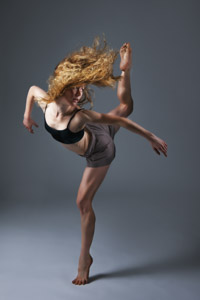
Dancer: Abby Leithart
Photo by: Geek With a Lens
A student just tagged me in an article from dance magazine and I just read through it and found it very much worth the reading. http://dancemagazine.com/inside-dm/magazine/why-grade-dance/ My student asked for my opinion about what I read. It is funny for this article to come out at this time considering I’m in the process of reviewing and altering my syllabi for my college performance classes for the new year and am thinking about very similar things.
I like to think of a syllabus as a contract between my dancers and myself as the instructor. I try to be very clear about my expectations as well as how I’m going to figure out their final grade. Attendance is a huge part of it as is following the dress code, the etiquette, the artistry, concentration, interest in learning, having a good attitude and completion of the papers and tests. What do I really look to on determining final grades though? One answer and that’s improvement.
I really analyze the dancers during their first classes of a semester. Where are they technically and artistically? At the end of the semester, I look for progress. Has the dancer fixed the corrections that I have given her? Is his alignment better? What about her muscle control? Are her in-between steps cleaner? Is he picking up combinations more quickly and accurately? Does she have more stamina? Is he continuing to push himself and ask more and more of his body?
As a student advances, these improvements get smaller because they have less to accomplish, but the dancer always needs to be moving toward perfecting. A teacher must realize as well that even if a dancer is putting in 100% effort, there is normal plateauing that can happen. However, since the semester lasts 14 weeks and the dancers are dancing daily, the student should still show some visual improvement in most, if not all areas.
What areas are we talking about? Well, I actually use a rubric with a list of things at which I look. I give a 5 for exceptional, 4 for excellent, 3 for good, 2 for fair and 1 for poor in each category. The higher the number, the higher their grade will be. Those numbers should go up each semester I have the student because I should see visible improvement in most categories on my list. Below is the rubric I use and I share this with the students at midterm so they can see where I think they are and the things that are important to me. Communication with students is the key.
Rating System: 5- exceptional, 4-excellent, 3-good, 2-fair, 1-poor.
Total of a possible: 135

Am I, as the instructor, the only one who needs to see improvement? No, the student must feel a sense of accomplishing their own goals as well. Part of their grade for me is writing their own goals. I keep those goals to a maximum of five and I ask that they be measurable. For instance: I would like my leg to go two inches higher in développés in each direction. Or: I would like to have a consistent triple pirouette to the right. The dancers hand these in to me at the start of the semester. During their midterm meetings, we review them. Whether they achieve the goals they themselves have set out to accomplish, is a big part of what I consider when I look at their improvement. What better way to keep a student motivated than them working towards a goal they feel is most important to them?
Attendance and work ethic are important yes, but they are essential to overall improvement which is what I’m looking at most when I deciding if a dancer did A or B work during their 14 weeks with me.
Is it hard grading art? Absolutely! However, it is the nature of the beast that is collegiate dance. If you focus on grading measurable improvement, it makes it a bit easier. After all, this is how an artistic director will one day figure out a dancer’s promotion through the company ranks. Instead of exceptional, excellent and so on, it will be principal, soloist and so on. The most important thing is to make sure grading is a positive experience that inspires the dancer to achieve their highest level of accomplishment. A grade should never feel like some random number or letter that the teacher chose to represent a student’s work. The student should feel that they control the grade they receive and, I believe, it makes the student more engaged in their work and therefore leads them to overall success which is what I, and all my colleagues, really want for our students.
